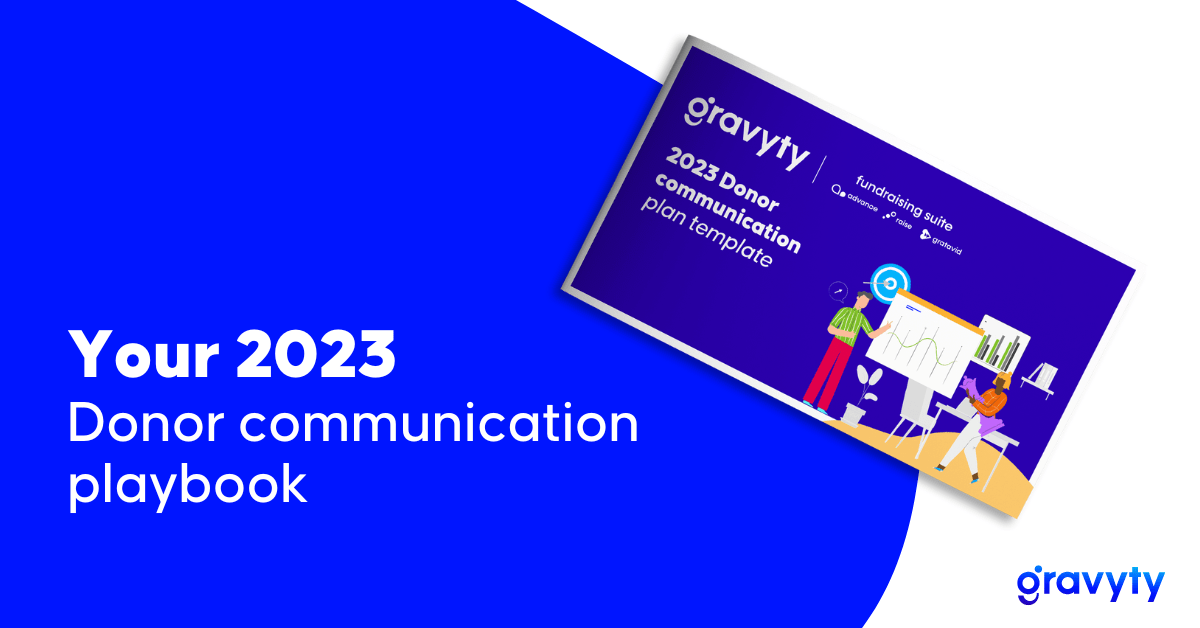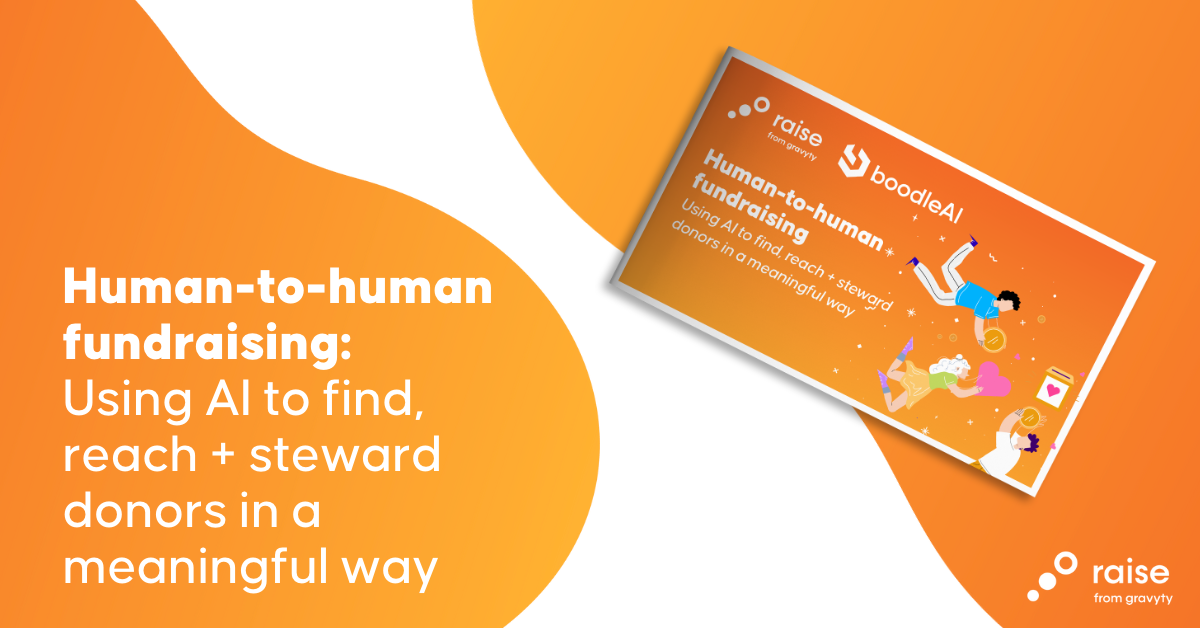2024 Giving USA annual report: Key trends & takeaways for fundraisers

Despite a less than optimistic view on the state of the economy and its potential impact on philanthropy, giving in 2023 increased almost 2% over last year according to Giving USA Foundation’s annual report on philanthropy.
While total donations amounted to $557.2 billion, an increase in giving from 2022, the adjustment from inflation reflects a 2.1% decline year over year. The report gives a comprehensive view into the state of philanthropy in 2023 including contribution sources and beneficiaries, trends and industry insights. Here, we break down key takeaways from the report.
Corporate giving is on the rise, in part thanks to the growth of matching gift programs
At $36.5 billion, giving by corporations is the second highest on record, a growth of 1.1% even adjusted for inflation. One factor that undoubtedly plays a role in the growth is the prevalence of matching gift programs.
Corporate matching gifts are a source of philanthropy in which companies financially match gifts their employees make to nonprofit organizations and educational institutions. With the emergence of frictionless giving platforms that offer a built-in matching gift database, individual donors are taking advantage of this charitable company benefit and making them feel even better about their donation.
Donor advised funds play an increasingly important role in giving
Giving by foundations demonstrated the most significant growth of giving sources, increasing 10.8% after adjusting for inflation. fueled in part by investments from Donor Advised Funds (DAF) contributions. Another sector showcasing the significance of the rise of DAFs is public-society benefit organizations, which grew 7.2%.
Amounting to $62.8 billion in 2023 – up from $46 billion just four years ago – this sector includes several large financial institution-managed DAFs like Fidelity and Vanguard.
These findings highlight two important clues for what’s to come in philanthropy: the growing importance of relationship-based fundraising since individual and family fund managers decide where they choose to invest, and the need for frictionless, easy giving to organizations through DAFs.
Religious organizations still own the largest share of giving, but it’s one of the only sectors on the decline
The 2023 results are clear – giving to religious-based organizations is still the lion’s share of total sector giving, making up 24% of the total amongst all other sectors. However, giving to this sector has been on a steady decline: it represented 60% of total giving 40 years ago. Giving to religion peaked in 2016, and has declined in five of the last seven years since then.
So, which sectors are showing signs of growth? Human services and education both grew significantly over last year, with human services making up 14% (up from 6%) of total sector giving and education also at 14% (up from 11%).
These mark an evolution in giving habits from individuals following the pandemic. A study from Fidelity Charitable found that donors increased grant recommendations for charities like food banks, homeless shelters, and youth programs in 2022, and nearly 80% of donors supported local nonprofits.
More bright news: giving to education reached its all time high in 2023. This sector’s growth is also in line with the trend of philanthropic contributions from DAFs – education received the highest percentage of DAF grant dollars among all sectors.
The era of mega-gifts is here – and orgs need to renew focus on the everyday donor
With big names like Mackenzie Scott, Phil Knight and Michael Bloomberg making headlines about billion-dollar gifts, these “mega-gifts” made up just 5% of all individual giving (still the largest share of dollars). In 2023, this category of donation – typically categorized as gifts of $500 million or more – accounted for $8 billion dollars and came from just five sources.
These mega-gifts are also largely being made through foundations, though, nodding to the previously mentioned increase in giving by foundations. The concerning takeaway is the growing reliance on fewer, higher net worth donors instead of a larger base of everyday donors.
Another trend of note is that these high-net-worth donors are more inclined to give toward causes tackling systemic issues, whereas everyday donors are more focused on immediate and urgent issues.

What’s ahead of philanthropy
While giving trends and inflation paint a mixed picture for fundraising organizations, the data can be used to make reliable predictions about what’s to come in 2025 and beyond.
AI’s role will continue to grow
As individual donors remain the major source of giving, organizations must lean into the transformative potential of AI to reach donors more strategically and more personally. Fundraisers have the most data and research available about donors than ever before. They should look to implementing AI within their tech stack to more efficiently manage large portfolios, connect authentically with donors at the right time, and scale the overall engagement experience.
Reducing friction in the giving experience
Donors today expect a seamless giving experience, and it’s up to organizations to deliver frictionless methods to give through preferred methods. Fundraising technology that makes online donations easier and accepts a wide variety of payment methods including DAFs and offers matching gifts will make giving frictionless for donors.
Technology providers like Gravyty who provides digital fundraising, AI portfolio management and omnichannel engagement technology as well as Chariot (a provider of DAF payment technology) and FreeWill (a platform that lets nonprofits accept legacy gifts) will play a key role in organizations offering frictionless giving experiences.
Staff turnover impacts donor retention
Fundraising is inherently personal. How and why people choose to give is based on their life experiences, motivations, and connection to the organization – not to mention, those who they form relationships with inside of those organizations. So with fundraiser retention facing a crisis, organizations run the risk of losing donors if they lose a gift officer who has spent time developing these personal relationships.
Leaders can tackle these issues head on by mitigating the turnover to begin with, but also putting processes and tools in place to provide donors with a consistent experience and holistic relationship with the organization.
A new era of giving
Despite economic uncertainties and inflationary pressures, philanthropy remained resilient in 2023. With notable increases in giving to human services and education and the shifts in giving through channels like donor advised funds and foundations, fundraising organizations have a lot of bright opportunities ahead to reach more donors and fuel their cause. The report underscores the growing importance of technology in delivering seamless giving experiences and mitigating staff turnover.



